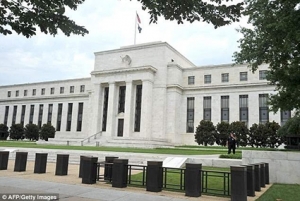What Higher US Interest Rates Mean for the Lari
On September 16-17 the Federal Open Markets Committee (FOMC) – the key decision-making body within the US Federal Reserve Bank – convened in Washington DC for its sixth meeting of the year. The FOMC has met every five to eight weeks for years, but this instance holds special significance.
The key item on the agenda is the question of raising interest rates, something the FOMC hasn’t done since 2006. The Federal Reserve has the dual mandate of maintaining price stability and full employment (in practice that usually means inflation of around 2 percent and an unemployment rate under 4 percent). Following the 2008 financial meltdown and subsequent recession, the Fed decided that high unemployment was a much greater threat than rampant inflation, and turned to an “easy money” policy.
The Fed flooded financial markets with cash in two ways. The first, keeping interest rates near zero, was meant to encourage lending by making it less profitable for banks to hold reserves. The second, “quantitative easing” (fancy talk for printing money to buy bonds from private investors), was intended to encourage borrowing by increasing the amount of cash banks had to lend.
The Fed ended the quantitative easing program in October 2014, and now it’s debating doing away with the other half of the easy money policy. The “lifting-off” of interest rates is controversial among economists. Some argue that the US economy is growing quickly enough that inflation now poses a larger threat than unemployment. The unemployment rate in August 2015 stood at 5.1 percent, its lowest since 2008.
Timothy Kane, an economist at the right-of-center Hoover Institution, is in favor of higher rates. “We’re so overstimulating when the U.S. economy is strengthening,” he said. “I’m afraid if they don’t hike rates now, they’ll find themselves in a bind of overheating territory for the labor market.”
Many others, however, argue that high inflation is still a distant threat. Year-on-year inflation stood at only 1.8 percent at the end of July. Furthermore, uncertainty in the global economy means that an interest rate hike could create a host of problems.
The Euro, Ruble and Chinese Renminbi have each fallen against the Dollar during the past year. Raising interest rates could push these currencies down even more, because higher rates make it more profitable for international investors to put their money in the US economy. More investors buying Dollars means fewer buying Euros, Rubles, Renminbi, and even Laris.
Former US Treasury Secretary Larry Summers warned of the risk of raising rates in an op-ed last month. “At this moment of fragility, raising rates risks will tip some part of the financial system into crisis, with unpredictable and dangerous results,” he wrote.
What This Means for the Lari
As the world’s most commonly used and traded currency, a small change in the value of the US Dollar can cause major changes in the values of smaller currencies, with an example being the Lari. Georgia’s currency has already had a rough year, falling from GEL1.75/USD1 to GEL2.43/USD1 since November 2014.
If the outcome of this week’s FOMC meeting is higher interest rates and a stronger Dollar, could we see the Lari drop even further?
A small drop in the Lari’s value against the Dollar would be difficult to avoid. However, the change in value may not be particularly large. As ISET demonstrated in a blog post last week, the performance of the Lari is more dependent on the Euro and Ruble than the Dollar. Because the EU and Russia are Georgia’s two largest trading partners and main sources of remittances, a weaker Euro and Ruble mean less foreign currency is flowing into Georgia, pushing the Lari’s value downward.
This leads us to believe that the Lari’s performance doesn’t have much to do with Federal Reserve policy – unless a rate hike puts the global economy into a tailspin, as some economists are warning. However, many Georgian households will be negatively effected, even if the Dollar gains only a few percentage points on the Lari.
That’s because of “Dollarization” in the Georgian economy. Roughly 60 percent of bank loans in Georgia are denominated in USD. For that reason, all of us who get paid in Lari but hold debts in USD watched this weeks’s FOMC meeting closely.
Joseph Larsen











